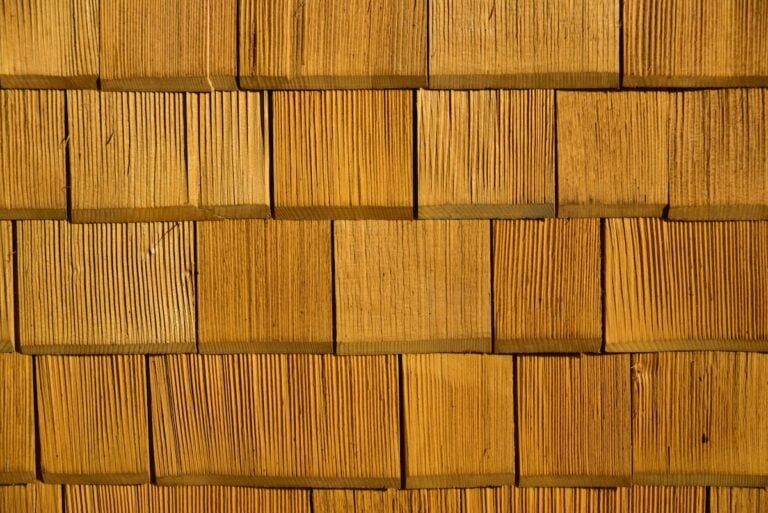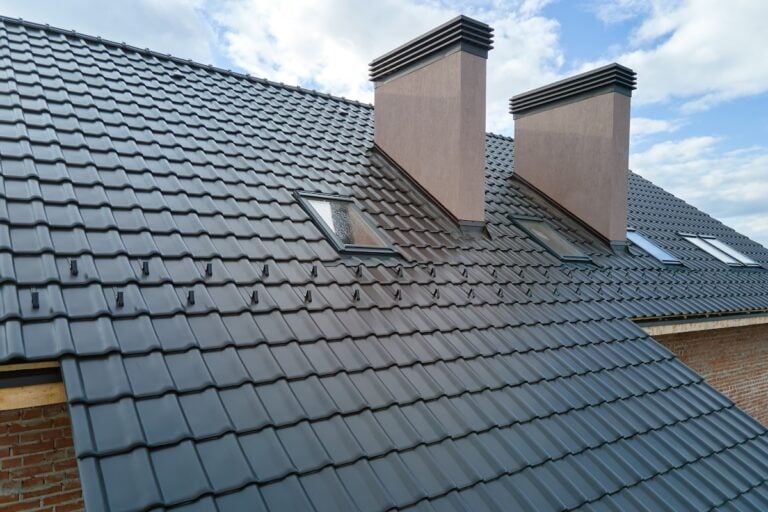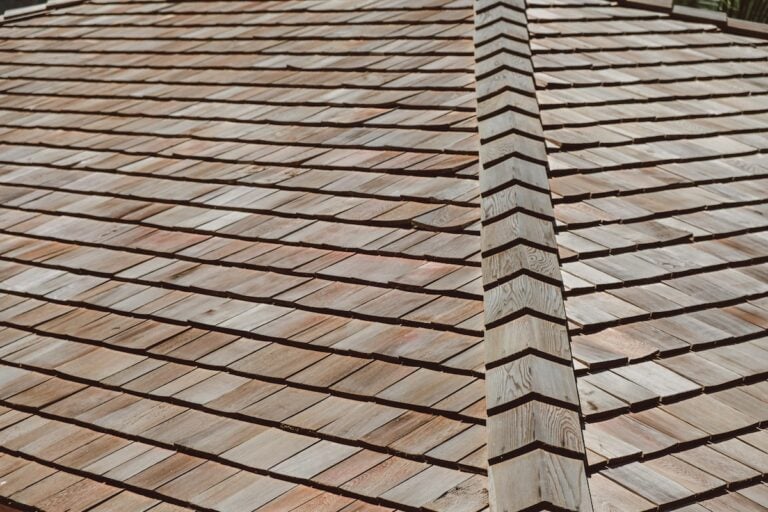Roof moss removal is essential for maintaining your roof’s integrity, curb appeal, and long-term performance. Moss may seem harmless, but over time, it traps moisture, breaks down roofing materials, and shortens the life of your shingles.
- Protects your roofing system: Moss weakens shingles and allows water to seep underneath.
- Improves home appearance: A moss-free roof instantly enhances curb appeal.
- Reduces repair costs: Routine moss removal can prevent expensive roof replacements down the line.
In this guide, we’ll walk you through the safe, effective steps homeowners can take to remove moss from the roof and keep it from coming back.
🌱 Why Moss Grows on Roofs
Moss thrives in cool, damp, and shaded environments. Roofs that receive little sunlight—especially those under tree cover—are prime real estate for moss growth. Unlike algae or dirt stains, moss is a living organism that roots itself into your shingles, lifting them and creating gaps for moisture to enter.
Unchecked moss growth can lead to wood rot, leaks, and even structural issues. Taking care of it quickly is key to avoiding serious roofing damage. Moss is different from mold on siding, but both thrive in damp, shaded conditions that require proactive care.
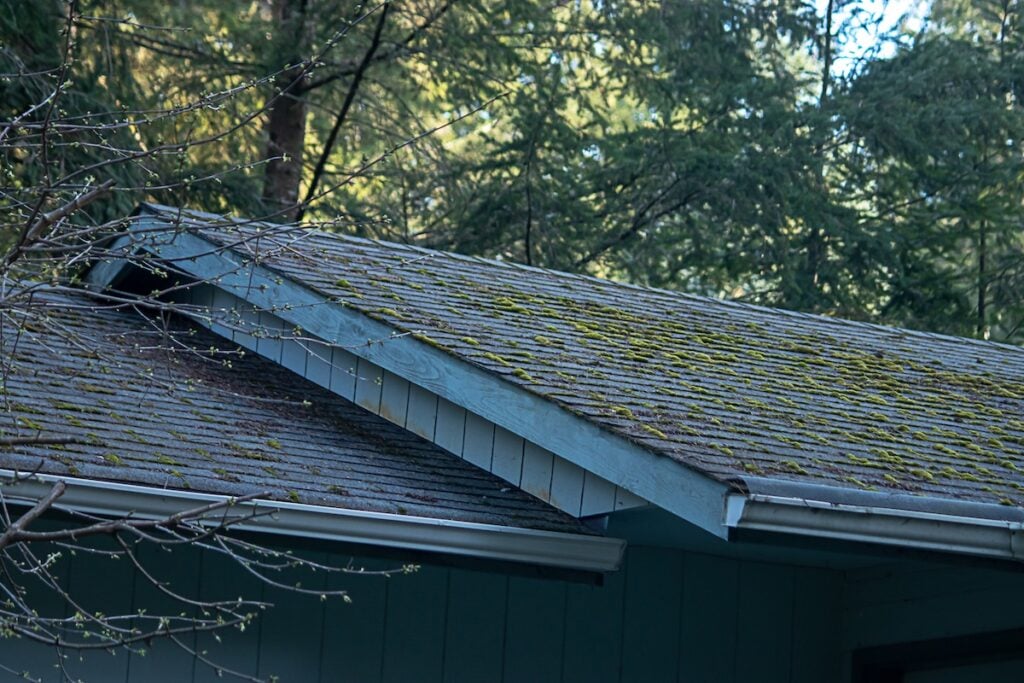
🦺 Safety First: Prep Before You Start
Before climbing onto your roof, it’s important to assess the risks and take proper safety precautions. Moss-covered shingles can be extremely slippery, especially when wet.
Always choose a dry, mild day and wear slip-resistant shoes. Use a sturdy ladder with someone nearby to assist, and never step directly on fragile or steep roofing materials if you’re unsure of your footing.
✅ 6 Steps to Remove Roof Moss Effectively
Here are the six steps homeowners can follow to tackle roof moss the right way. Taking a careful, methodical approach ensures you won’t damage your shingles in the process.
1. Clear Debris From the Roof Surface
- Purpose: Removes leaves, twigs, and branches that trap moisture
- Tools needed: Leaf blower, soft broom, or plastic rake
- Why it matters: Clearing surface debris gives you a clean starting point and prevents further moss buildup. Avoid using anything with stiff bristles that might scrape the shingles.
2. Wet the Affected Area With Water
- Purpose: Loosens moss clumps and softens roots
- Tools needed: Garden hose with a gentle spray nozzle
- Why it matters: Pre-soaking makes moss easier to remove and reduces the risk of damaging the roof as you clean.
3. Apply a Roof-Safe Moss Cleaner
- Purpose: Kills moss down to the root without harming shingles
- Tools needed: Pump sprayer or spray bottle
- Why it matters: Choose a moss removal product specifically labeled as safe for asphalt shingles or your roofing type. Avoid bleach or harsh chemicals that may discolor or degrade your roof.
4. Let the Cleaner Sit as Directed
- Purpose: Gives the solution time to break down moss colonies
- Timeframe: Usually 15–45 minutes depending on the product
- Why it matters: Skipping this step reduces effectiveness. Always follow label instructions closely for the best results.
5. Gently Scrub or Rinse the Moss Away
- Purpose: Removes dead moss without harming your shingles
- Tools needed: Soft-bristle brush, garden hose
- Why it matters: Always scrub in a downward direction with light pressure to avoid lifting or tearing shingles. If your cleaner is “no scrub,” rinsing may be all that’s needed.
6. Clean Gutters and Downspouts
- Purpose: Prevents clogs and water backups
- Tools needed: Gutter scoop, gloves, or hose flush
- Why it matters: Moss debris often ends up in your gutters. Cleaning them afterward ensures your roof’s drainage system works properly.
If you notice clogs during moss cleanup, consider professional Fairfax gutter services to keep drainage flowing properly.
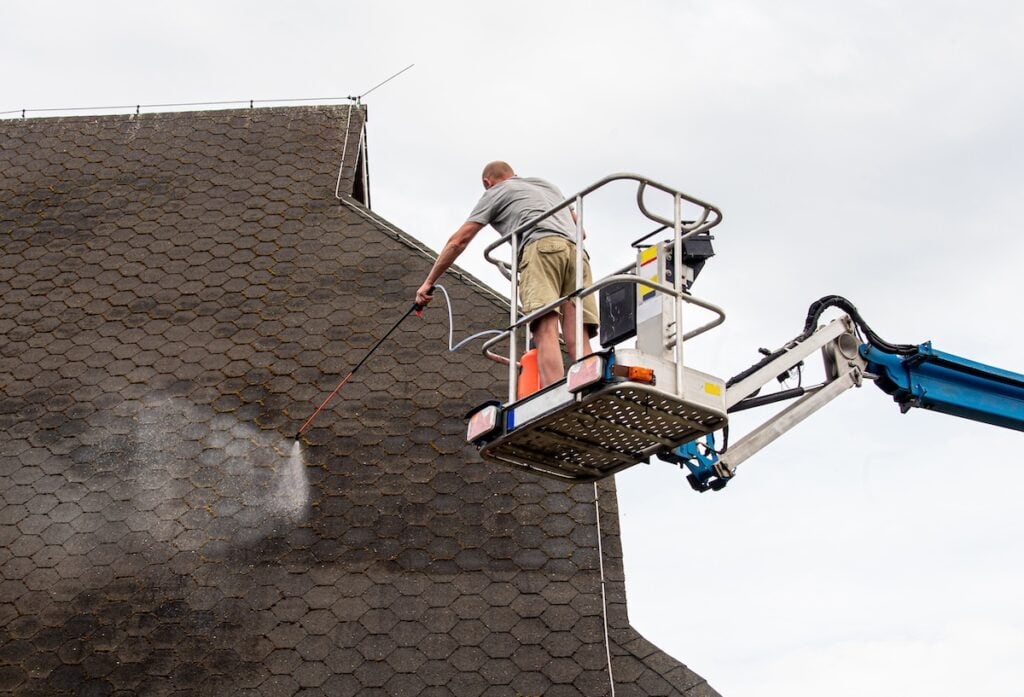
❌ Mistakes to Avoid During Moss Removal
Even with the right tools and products, rushing through moss removal can lead to costly damage. Here are the most common errors homeowners should avoid.
Using a Pressure Washer
While it may seem efficient, pressure washing can strip granules from shingles and void your roof’s warranty. Stick to garden hoses or roof-specific cleaning tools. Instead of aggressive cleaning methods, using the right roof safety equipment ensures the job is both effective and safe.
Scrubbing Too Hard
Moss can be stubborn, but over-scrubbing or using abrasive brushes can lead to torn shingles and exposed underlayment. Gentle pressure is more effective and safer in the long run.
Applying Bleach or Vinegar
Household cleaners like bleach and vinegar may be great for patio moss but can discolor shingles or corrode metal roof components. Always use a roof-specific solution.
👍 How to Prevent Moss From Returning
After roof moss removal, it’s smart to take preventive steps to keep your roof moss-free. Routine maintenance and environmental adjustments can go a long way.
Trim Overhanging Branches
Branches block sunlight and drop organic debris onto your roof. Pruning them back improves air circulation and makes it harder for moss to thrive. Shaded homes, especially those with heavy tree cover, often need extra care. For expert roofing in Arlington, preventive maintenance can make all the difference.
Install Zinc or Copper Strips
These metal strips, installed along the ridge of your roof, release ions when it rains that naturally kill moss and algae. They provide ongoing protection with little maintenance.
Keep Gutters Clean
Clogged gutters overflow and keep your roof damp—conditions moss loves. Make seasonal gutter cleaning part of your home care routine, or install gutter guards for easier upkeep.
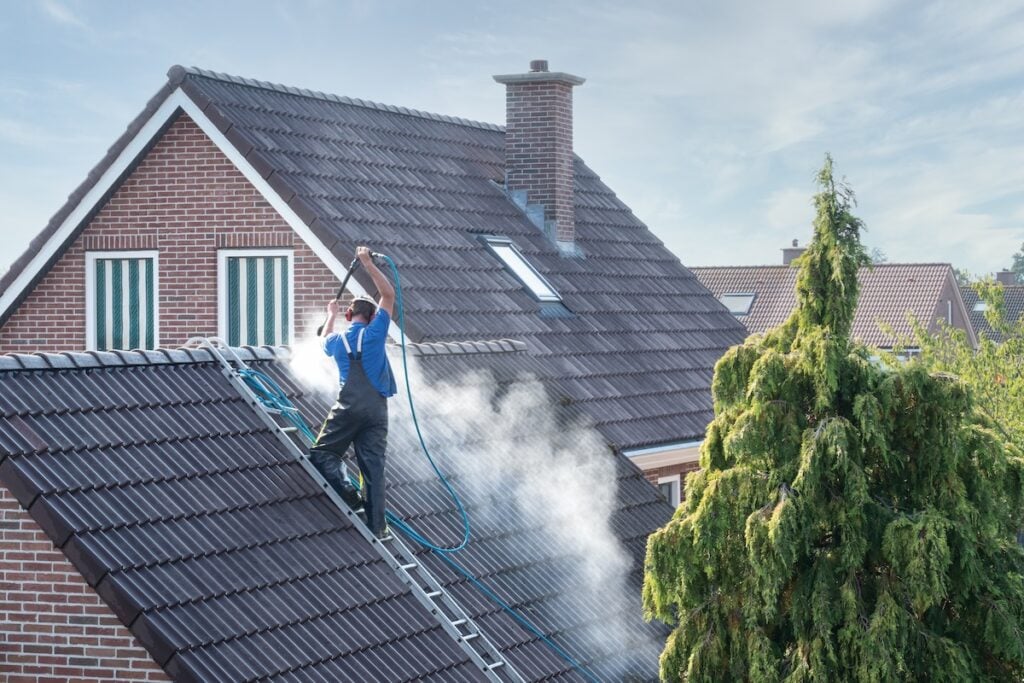
📞 When to Call a Professional
Some roofs are too steep, fragile, or extensive to safely clean on your own. If you’re unsure about accessing your roof or if moss has caused visible damage, it’s time to call a roofing expert.
Springfield Roofing & Sheet Metal provides safe, effective moss removal and long-term solutions to keep your roof protected. We’ll inspect your shingles, remove existing growth, and offer guidance on preventing future problems. If moss has already caused visible shingle damage, trusted Alexandria roofing contractors can restore your roof before the problem worsens
🏠 Keep Your Roof Clear, Clean, and Protected
Roof moss removal is one of the best things you can do to maintain your roof’s appearance and durability. With the right approach and a little patience, homeowners can clear away moss safely and protect their shingles from long-term damage.
If your roof needs more than a simple cleaning, Springfield Roofing & Sheet Metal is here to help. From inspections and soft washing to long-term moss prevention, we’ll get the job done right. Contact Springfield today to learn more and schedule your roofing project. Let’s keep your roof healthy, clean, and built to last.



